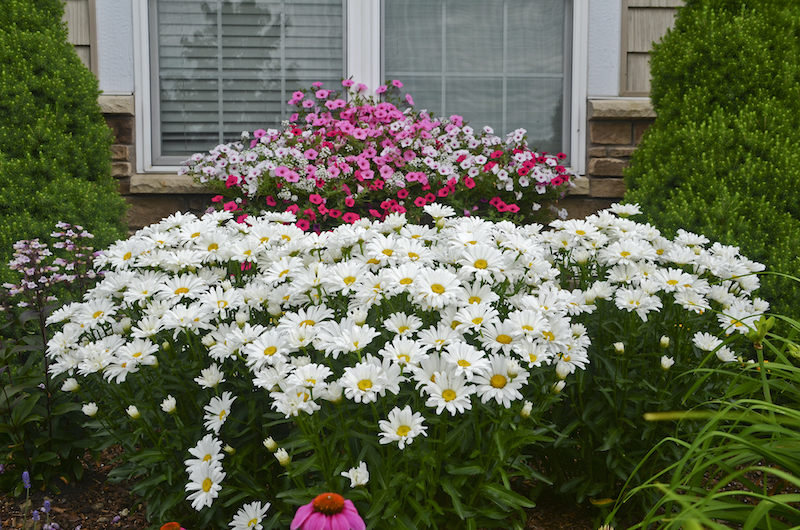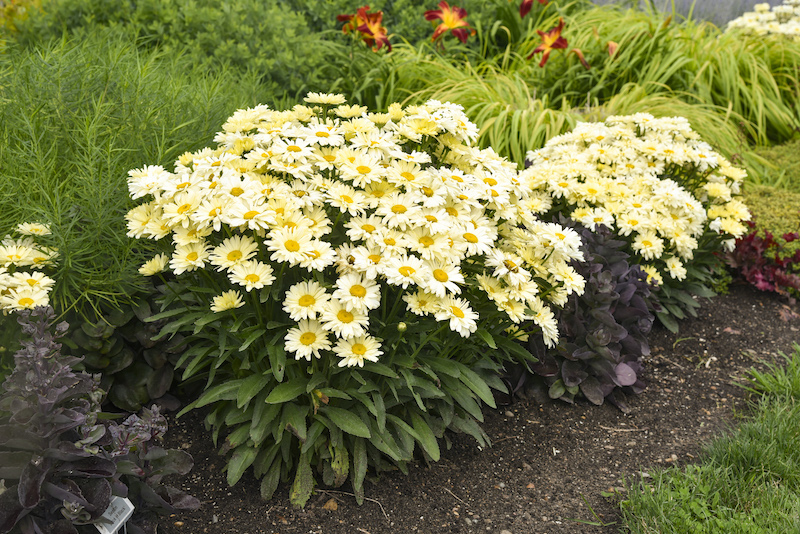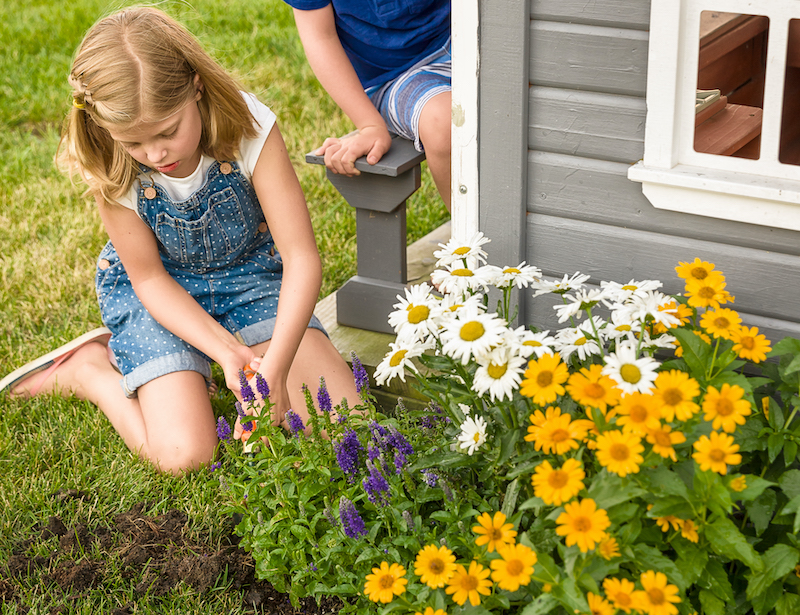Leucanthemum x superbum, more commonly known as Shasta Daisy, is a hybrid of wild native Daisies with more than 69 cultivars. Although there is a wide range of petal shapes and arrangements, all Shasta Daisies have similar tough, green basal leaves that form large clumps over time and remain semi-evergreen in the warmest growing regions.

What You Need To Plant Shasta Daisy
- Transplanting spade or hand trowel
- Compost or other finely shredded organic matter for mulching
- Location with soil at least 12 inches deep
- Water source nearby
Where to Plant Shasta Daisy
Shasta Daisies require a location with full to part sun exposure and well-draining soil 12 months of the year. Some shade either early or late in the day is acceptable and will not negatively affect the blooming vigor of this perennial. A spot with deep soil is preferred over a location with shallow or compacted soil. The fibrous roots of Shasta Daisy can grow deeper in loose soil, therefore making the plant more drought tolerant. A loamy soil with a neutral pH is perfect. Shasta Daisies do not require heavy fertilizing but do prefer soils that can retain moisture, as consistent moisture supports longer blooming.
Shasta Daisy Spacing
Planting daisies in large groups gives an instant fullness to the garden. Groups of three or five will grow into large swaths of color that look more naturalistic than dotting plants by ones or twos throughout a garden bed. Space plants 12 -16 inches apart center on center. Taller cultivars of Shasta Daisy may need support from bamboo canes, flower rings, or tomato cages. Placing the support over the plant while small allows the plant to grow naturally through the support, hiding it and requiring little assistance from the gardener.
Shasta Daisies also are known to be prolific self-seeders and spread easily, depending on the cultivar. Dividing these plants is a guaranteed way to multiply and spread Shasta Daisies to just the right location. There is no need to worry about Shasta Daisies damaging buildings or fencing foundations. The roots are shallow compared to shrubs and trees and plants are easily dug out if they become overgrown.

Steps To Plant Shasta Daisy
Step 1 - Dig a hole twice as wide and as deep as the rootball.
Step 2 - Remove the plant from the container and gently tease the roots apart if the plant is root bound.
Step 3 - Place the plant in the hole so that the growing points, or crown of the plant, are at the soil level, and carefully backfill the hole with soil.
Step 4 - Firm the soil around the rootball and level out the area around the root zone.
Step 5 - Water the plant well, thoroughly soaking the root zone.
Step 6 - Mulch around the root zone of the plant with 2-3 inches of finely shredded leaves, arborist chips, or organic compost to suppress weeds and hold moisture in the soil longer.
Step 7 - Provide your new plant one inch of water per week if no natural precipitation occurs.
When to Plant Shasta Daisy
Shasta Daisy is an herbaceous perennial that emerges with new growth early in the spring for most gardening zones. The best time of the year to plant new daisies is in the spring to give the root system time to establish itself before the whole plant goes dormant in late fall. In the upper end of the growing range, daisies tend to stay evergreen and can be planted and transplanted in the fall. Start seeds of Shasta Daisy 6-8 weeks before the final frost date for your growing zone.

Transplanting Shasta Daisy
Shasta Daisies are easy to divide and will provide numerous new plants for your garden and friends’ gardens. Dig up any clumps of daisies that have started producing shorter or fewer flower stems. With a sharp spade or garden knife, slice straight through the clumps making smaller plants. Making bigger divisions will help new plants establish faster, although individual plants can be gently teased apart to plant into containers or smaller areas. Shasta Daisies are best divided and transplanted in late spring, although fall is a good time in USDA zones 8-9. Water newly planted transplants well until the roots are established.
This page contains affiliate links to products on Amazon. We may receive a commission for purchases made through these links.
 |
Author Robbin Small - Published 3-13-2023 |
